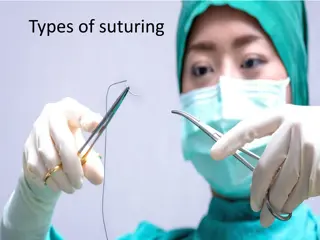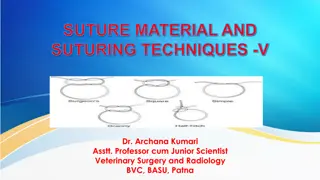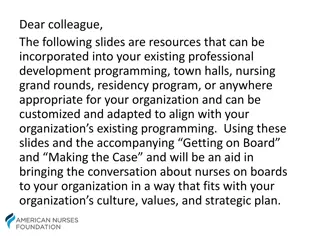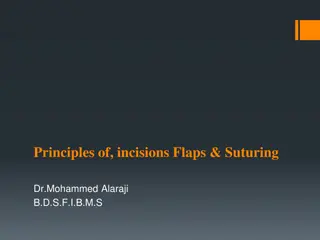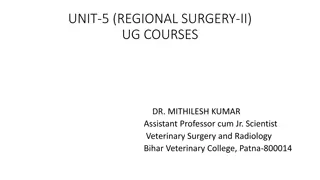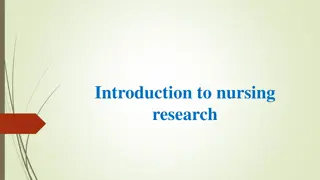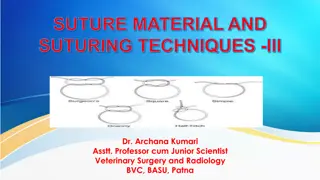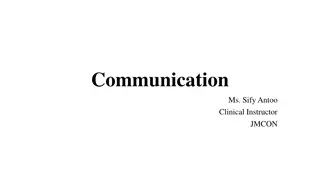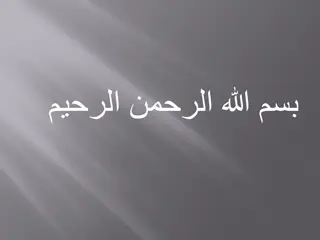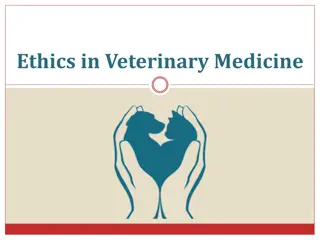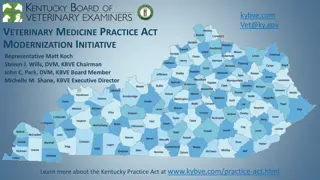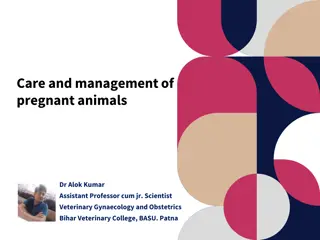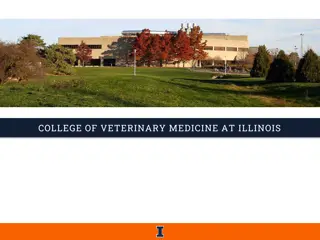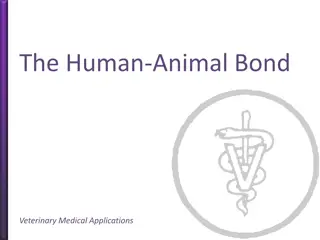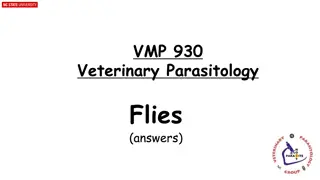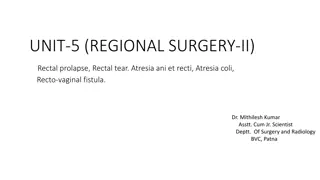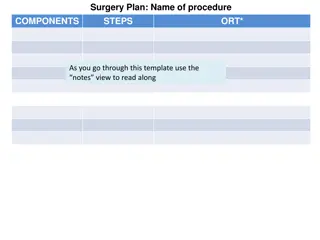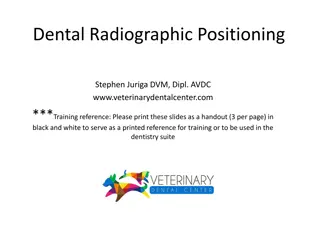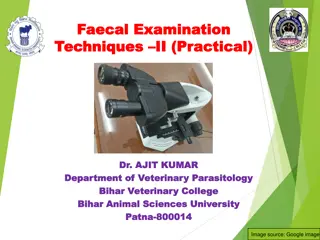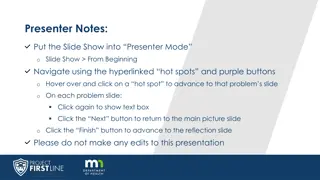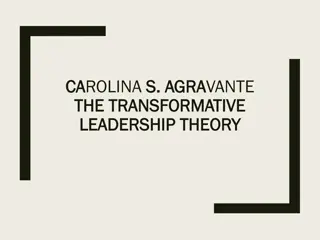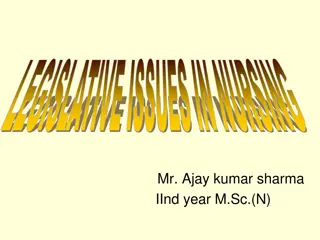Mastering Advanced Suturing Techniques for Veterinary Nurses
Explore the nuances of suturing with in-depth topics such as choosing the right suture material, surgical incisions, knot techniques, intradermal patterns, and more. Understand the classification of sutures based on material, structure, and absorbability to enhance your proficiency in suturing procedures.
Download Presentation

Please find below an Image/Link to download the presentation.
The content on the website is provided AS IS for your information and personal use only. It may not be sold, licensed, or shared on other websites without obtaining consent from the author. Download presentation by click this link. If you encounter any issues during the download, it is possible that the publisher has removed the file from their server.
E N D
Presentation Transcript
Advanced Suturing for RVNs Zamantha Marshall Lissann Wolfe
What will be covered. Choosing an appropriate suture material How to make a surgical incision How to bury a knot Intradermal suture patterns How to perform an Aberdeen knot
Choosing Suture Material Absorbable vs nonabsorbable Natural vs synthetic Monofilament vs multifilament Tensile strength Ease of handling Knot security Capillary (fluid absorption & wicking) Tissue being sutured, healing speed, cost
Suture Classification Natural Protein thus reactive Inconsistent quality Silk- gold standard for handling Less expensive? Usage declining Catgut future? Synthetic More inert Consistent quality Highest usage Ongoing product upgrades
Suture Classification Monofilament Simplified structure impacts resistance Resist infection Knot characteristics Filament care Multifilament Coating Structure impacts handling
Suture Classification Absorbable vs Nonabsorbable Loss of tensile strength < or > 60 days Absorbable Varies with patient factors Tissue reaction Healing rates Non absorbable Becomes encapsulated Potential nidus
Buried Knots This technique is used to start a line of subcutaneous or intradermal sutures to reduce the irritation that may be caused by the knots rubbing against superficial tissues. To bury the knot, introduce the needle deep in the far subcutaneous or intradermal tissue passing it up into the tissue, across the incision and then down into the tissue on the near side exiting deep in the incision line. Now form a knot, which will be buried within the incision line.
Intradermal Suture Pattern Often used to replace skin sutures and reduce scarring Reduce patient interference and eliminate the need for suture removal in sensitive areas or in fractious patients Started by burying the knot Bites of the suture lie parallel to the line of the incision Successive bites should backtrack slightly for the best apposition Tension is adjusted after each bite as it is difficult to readjust once the pattern is completed Suture line is completed with another buried knot or Aberdeen knot Absorbable suture material should be used
Aberdeen Knot (A) The hand picks up the last suture loop placed through the wound and the fingers are slipped through it. (B) The middle and ring fingers are hooked around the suture attached to the needle, which is maintained in traction and pulled back through the loop. (C) Steps 1, 2: The loop is allowed to slip off the thumb so the hitch is formed. (D) Tightening of hitch is facilitated by hooking the ring and little finger through the loop and exerting traction in the direction of the arrow while relaxing tension on the suture and needle holders (the first throw is now complete). Steps A through the D are repeated 2 or more times to add additional throws. (E) To place the final locking throw (called a turn), instead of holding onto the needle it is allowed to pass through the loop and continued traction tightens and locks the Aberdeen knot.


